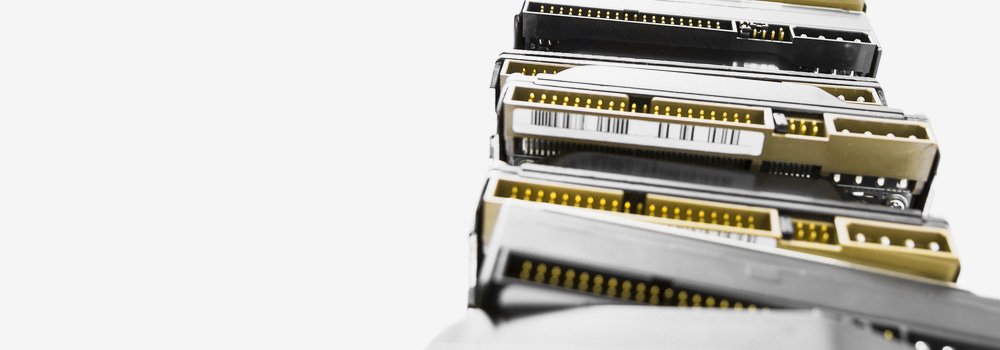Hard Drive Data Recovery Bristol:
Hard drives from Seagate, Maxtor, Western Digital, Toshiba, and Samsung are widely used across personal and business settings. However, they are susceptible to data loss due to mechanical, electronic, software, and firmware issues. The information below explores data recovery solutions tailored to these common hard drive brands, providing insights into each failure type and the recovery process. Hard drives are susceptible to data loss from a range of issues, from physical damage to software corruption. Professional data recovery services specialize in these failures, with processes that include diagnosis, data extraction, and secure restoration. Common types of hard drive failures include mechanical issues, electronic failures, software corruption, and firmware corruption, each of which requires different techniques for effective recovery.
Types of Hard Drive Failures
Mechanical Failures
Mechanical failures are due to physical issues within the drive, often involving the read/write head, actuator arm, or spindle motor. Symptoms include clicking or grinding noises, indicating head crashes or platter damage.
Electronic Failures
Electronic issues arise from damaged printed circuit boards (PCBs), often due to power surges or static discharge. These failures may prevent the drive from powering on or being recognised by a computer. Component-level repair is typically required to replace or repair the PCB.
Software and Logical Data Recovery
Software issues, also known as logical failures, occur when files become inaccessible due to file system corruption, accidental deletion, or malware attacks. Logical recovery involves ourselves using software tools that scan the drive and retrieve data without requiring hardware repair.
Firmware Corruption
Firmware issues are software-based problems within the hard drive’s firmware, which controls its functionality. Corrupted firmware may cause the drive to freeze, become undetectable, or behave erratically. Firmware recovery involves our engineers reprogramming or bypassing corrupted firmware to access the data.
Seagate Hard Drive Data Recovery Services
Seagate is known for its HDDs and SSDs, but they are prone to specific firmware and mechanical issues. Seagate recovery services include:
- Firmware and Mechanical Issues: Common firmware problems in Seagate drives require specialized tools for reprogramming. Mechanical failures, such as spindle motor issues and read/write head issues.
- Data Extraction for SSDs: Recovery for Seagate SSDs requires advanced tools due to encryption and wear-levelling.
Maxtor Hard Drive Data Recovery Services
Maxtor drives, now owned by Seagate, are prone to PCB and firmware issues. Maxtor recovery services cover:
- Electronic and Firmware Repairs: Recovery providers use specialized tools to repair or replace PCBs and reflash firmware in case of corruption.
- Legacy Drive Support: Professional services handle older Maxtor drives with unique configurations, often requiring replacement parts for effective recovery.
Western Digital Hard Drive Data Recovery Services
Western Digital (WD) drives include HDDs and SSDs with unique firmware and mechanical components. Recovery services for WD drives include:
- Mechanical and Firmware Failures: WD drives often suffer from mechanical head issues and firmware corruption..
- Logical and Physical Data Recovery: Our Professional recovery includes logical repairs for software issues and physical repairs for damaged components.
Toshiba Hard Drive Data Recovery Services
Toshiba is known for both its HDDs and SSDs, with recovery needs ranging from firmware to physical failures. Toshiba-specific services include:
- Firmware-Specific Recovery: Toshiba drives are known for firmware-related failures, which require specialized tools to reflash or bypass corrupted firmware.
- Physical and Logical Recovery for HDDs and SSDs: Mechanical damage and software tools for logical recovery are often used for Toshiba drives.
Samsung Hard Drive Data Recovery Services
Samsung manufactures high-speed SSDs and HDDs with unique storage technologies. Samsung data recovery services include:
- SSD and HDD Recovery: Samsung SSDs often require specialised tools to handle encrypted data, while HDDs may need physical repairs in case of mechanical damage.
- Firmware Recovery for High-Speed SSDs: Firmware recovery techniques we use ensure data can be extracted from high-speed Samsung NVMe SSDs affected by firmware issues.
Mechanical Failures in Hard Drives
Mechanical failures are caused by physical damage to the drive, which may involve:
- Head Crashes and Platter Damage: These occur when the read/write head contacts the platter, damaging data on the surface.
- Spindle Motor Issues: Spindle motor failures prevent the platters from spinning, requiring cleanroom recovery to extract data without damaging the drive further.
Electronic Failures in Hard Drives
Electronic issues occur when electrical components on the PCB fail, often due to:
- PCB Failure and Replacement: Damaged PCBs require component-level repair or replacement to restore power to the drive.
- Power Surge Damage: Drives affected by power surges need diagnostics to identify failed components, which can be repaired to retrieve data.
Software and Logical Data Recovery
Software-based issues include:
- Accidental Deletion and Formatting: Recovery software scans for deleted files and restores data without accessing hardware.
- File System Corruption: Corruption in the file system may require data reconstruction using specialised recovery software.
Firmware Corruption and Recovery
Firmware issues occur when the drive’s internal software is corrupted, resulting in symptoms like:
- Unresponsive or Locked Drives: Specialised tools can bypass corrupted firmware to access data.
- Reflashing and Reprogramming: Firmware reprogramming is used to resolve firmware corruption and make data accessible again.








